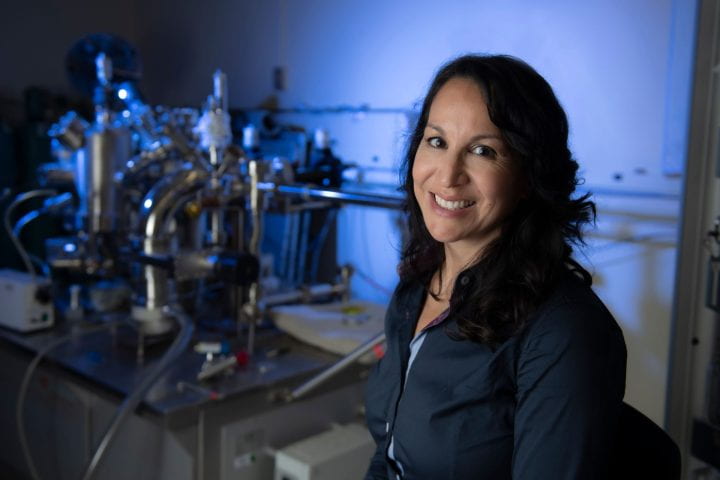UC Irvine researchers create E. coli-based water monitoring technology | UCI News

Irvine, Calif., Feb. 23, 2023 – People typically affiliate Escherichia coli with contaminated foods, but E. coli has very long been a workhorse in biotechnology. Experts at the College of California, Irvine have shown that the bacterium has even more value as component of a method to detect significant steel contamination in drinking water.
E. coli show a biochemical reaction in the presence of metallic ions, a slight improve that scientists have been ready to notice with chemically assembled gold nanoparticle optical sensors. By means of a equipment-finding out assessment of the optical spectra of metabolites produced in reaction to chromium and arsenic exposure, the researchers ended up capable to detect metals in concentrations a billion moments lessen than all those major to mobile demise – whilst being equipped to deduce the significant steel type and amount with better than 96 p.c accuracy.

Contaminated drinking water is a key resource of poisonous weighty metal exposure for animals and persons. The metabolic tension reaction of E. coli is utilised to detect the existence of toxic metals in faucet drinking water and wastewater. Difficult to detect weighty steel ions are thus transformed to more easily detectable chemical signals. Regina Ragan / UCI
The system, which the researchers stated can be achieved in about 10 minutes, is the subject of a examine appearing in Proceedings of the Nationwide Academy of Sciences.
“This new h2o monitoring process produced by UCI researchers is hugely sensitive, speedy and functional,” mentioned co-creator Regina Ragan, UCI professor of materials science and engineering. “It can be broadly deployed to observe harmful toxins at their resources in ingesting and irrigation h2o and in agricultural and industrial runoff. This program can provide an early warning of significant metallic contamination to safeguard human overall health and ecosystems.”
In addition to proving that microorganisms like E. coli can detect unsafe h2o, the researchers spotlighted the other essential parts – gold nanoparticles assembled with molecular precision and equipment understanding algorithms – which considerably improved the sensitivity of their monitoring procedure. Ragan claimed it can be applied toward recognizing steel toxic compounds – like arsenic, cadmium, chromium, copper, direct and mercury – at amounts orders of magnitude down below regulatory limits to provide early warning of contamination.
In the research, the experts described that they can implement trained algorithms to unseen faucet drinking water and wastewater samples, which signifies the method can be generalized to drinking water sources and materials wherever in the entire world.
“This transfer understanding technique permitted the algorithms to ascertain if ingesting h2o was within just U.S. Environmental Defense Company and Entire world Overall health Organization suggest boundaries for each contaminant with better than 96-p.c precision and with 92-percent accuracy for treated wastewater,” Ragan reported.

After significant metal exposure, the contents (lysate) of E.coli cells are examined with a delicate optical sensor composed from gold nanoparticles which are optimized to detect at amounts of one particular metallic toxin per bacterium in resolution. Machine finding out algorithms master the chemical fingerprint of the worry reaction, which is exclusive to the sort and amount of metal toxin, from the optical spectra. Great-tuned types then determine if an mysterious h2o sample is harmless. Regina Ragan / UCI
“Access to harmless h2o is necessary for the wellness of individuals and the earth,” she extra. “New know-how that can be mass manufactured at low-expense is necessary to monitor the introduction of an array of contaminants in the drinking water offer as a essential part of the remedy for drinking water stability in the face of pollution and climate adjust.”
Signing up for Ragan on this task, which was funded by the National Science Foundation, ended up Hong Wei and Yixin Huang, UCI graduate college student researchers in resources science and engineering Yen-Hsiang Huang, UCI graduate scholar researcher in civil and environmental engineering Sunny Jiang, UCI professor of civil and Environmental engineering and Allon Hochbaum, UCI professor of components science and engineering.
About UCI’s Outstanding Future campaign: Publicly released on Oct. 4, 2019, the Fantastic Upcoming marketing campaign aims to increase recognition and aid for UCI. By engaging 75,000 alumni and garnering $2 billion in philanthropic financial commitment, UCI seeks to attain new heights of excellence in student achievement, health and wellness, investigate and extra. The Henry Samueli School of Engineering performs a vital function in the achievement of the marketing campaign. Find out much more by going to https://brilliantfuture.uci.edu/the-henry-samueli-school-of-engineering/.
About the University of California, Irvine: Founded in 1965, UCI is a member of the prestigious Affiliation of American Universities and is ranked amongst the nation’s major 10 public universities by U.S. Information & Globe Report. The campus has produced five Nobel laureates and is known for its educational accomplishment, premier analysis, innovation and anteater mascot. Led by Chancellor Howard Gillman, UCI has more than 36,000 college students and presents 224 degree courses. It’s located in just one of the world’s most secure and most economically vibrant communities and is Orange County’s next-major employer, contributing $7 billion on a yearly basis to the regional financial system and $8 billion statewide. For much more on UCI, visit www.uci.edu.
Media access: Radio programs/stations may perhaps, for a fee, use an on-campus ISDN line to interview UCI school and specialists, subject to availability and college acceptance. For far more UCI news, visit news.uci.edu. Additional methods for journalists may well be discovered at communications.uci.edu/for-journalists.






